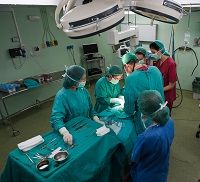Article
What Will They Think of Next? 3D Models before Surgery
Author(s):
Researchers recently used a 3-D printer to create case-specific models that can aid in accurate, extensive preoperative planning.

Three-dimensional (3-D) printing is the buzz in technology for 2015—perhaps you’ve heard of the Hershey’s CocoJet printer? It allows the user to sculpt chocolate. Take note: Surgeons are applying 3-D technology to improve care. Researchers from the Phoenix, AZ Mayo Clinic teamed with a high school student to apply 3-D printer technology to clinical practice. They promote the result, office-based rapid prototyping, as a method for accurate, extensive preoperative planning. They describe 7 complex orthopedic cases in which they used this approach in a literature review and case report compilation in the January 2015 issue of The American Journal of Orthopedics.
The article describes use of industry-provided and commercially available, in-house 3-D printers. Aside from excellent pictures of the models used for preoperative planning, the authors report several interesting facts:
- Printers similar to the one they employ cost $52,000 to $56,000 at this time; the authors do not specify a per-case cost, but indicate it is “relatively low.”
- They generate a 3-D software model in approximately an hour, although more complex cases with significant amount of metal artifact subtraction take more time.
- Printing is a lengthy process, so they generally start the print on Friday afternoon so it is ready Monday morning.
The process depends on radiologists who are able to provide appropriately formatted DICOM images, and metal artifact subtraction requires some technological skill.
Some uses of this technique include generating a patient-specific drill template to insert anterior transpedicular screws; identifying vascular and biliary tract anatomy with a high degree of accuracy; and performing mock surgery to access accuracy of the surgical plan.
Performing mock surgery increases safety for patients and allows surgeons to identify potential challenges in advance. As this technology improves and becomes easier to use and faster, becomes more readily available, and the cost falls, this may be a routine step is surgical care.




